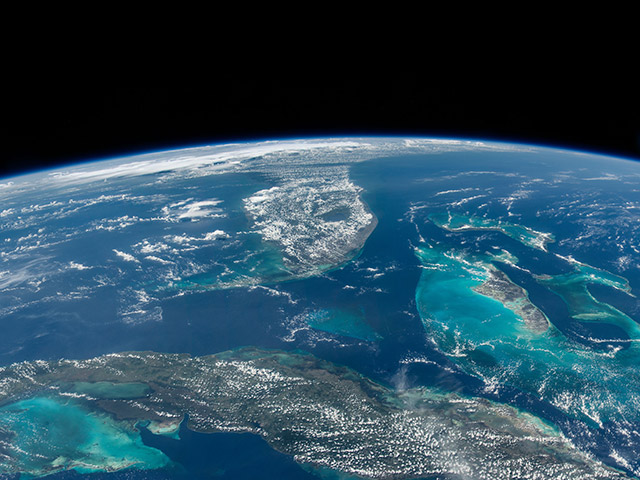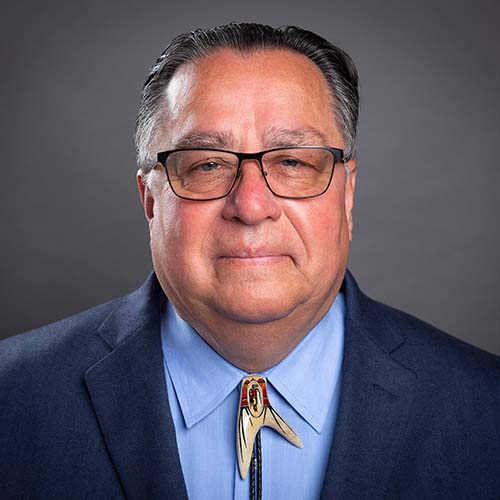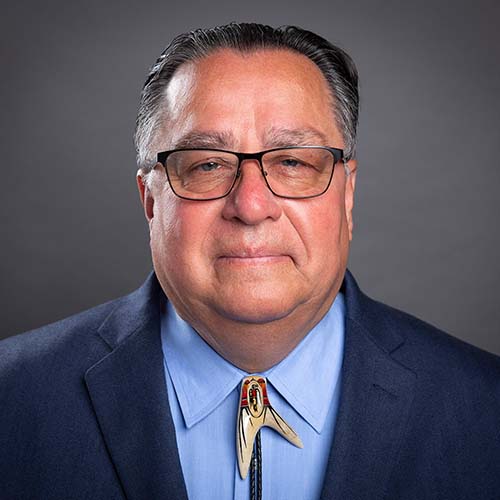
- Details
- By Levi Rickert
Opinion. The United States commemorated the first Earth Day 55 years ago on April 22, 1970, as a means to galvanize Americans around protecting an increasingly polluted environment. Earth Day was the brainchild of the late Sen. Gaylord Nelson (D-Wisc.), who recruited activist Denis Hayes to help organize nationwide teach-ins and demonstrations on college campuses.
Together, the two choose April 22, a weekday falling between Spring Break and Final Exams, to maximize the greatest student participation.
For the past 55 years, there have been strides made to protect Mother Earth even though the pendulum swings back and forth between Republican and Democratic presidential administrations.
This year, things feel much different.
The second Trump administration, inaugurated in January 2025, has swiftly enacted a series of policies that significantly alter the U.S. environmental landscape. These measures align with the conservative agenda outlined in Project 2025, a comprehensive blueprint developed by the Heritage Foundation and other conservative groups.
Key Environmental Policy Actions:
Withdrawal from the Paris Agreement: On his first day in office, President Trump signed Executive Order 14162, formally withdrawing the United States from the Paris Climate Agreement for the second time. This decision has been met with criticism from environmental organizations, which argue that it undermines global efforts to combat climate change.
Rescission of NEPA Regulations: The Trump administration directed the Council on Environmental Quality (CEQ) to rescind all regulations implementing the National Environmental Policy Act (NEPA) since 1977. Critics contend that this move reduces public oversight and accelerates infrastructure projects without adequate environmental review.
Expansion of Fossil Fuel Development: The administration has initiated a new five-year offshore oil and gas leasing program, potentially expanding drilling beyond the Gulf of Mexico. This action follows the reversal of previous drilling bans in the Atlantic, Pacific and Arctic regions.
Deregulation of Environmental Agencies: Under Project 2025, the administration plans significant reductions in federal environmental protections and workforce. Proposals include expanding oil and gas leases, reviving the “Energy Dominance Agenda” and implementing major staff cuts at the Environmental Protection Agency (EPA), potentially impacting its ability to enforce environmental laws.
Impact on Clean Energy and Climate Action: Despite these federal policy shifts, clean energy continues to gain momentum. Technological advancements and market economics have made renewable energy sources like wind and solar among the cheapest globally. Progress continues, driven by increasingly efficient and affordable solutions such as batteries and electric vehicles. This trend suggests that the transition toward clean energy is reaching a critical tipping point, with momentum largely self-sustaining even amid political opposition.
All of these measures demonstrate the second Trump administration's environmental policies represent a significant shift toward deregulation and increased fossil fuel development. While these changes have sparked considerable debate, the ongoing advancements in clean energy technologies indicate that the broader transition toward sustainability may continue, albeit at a potentially slower pace.
Prior to 1970, there were few regulations in place that policed corporations that polluted the environment, including land and water, in the United States. Corporations view regulations as government overreach or a threat to free-market capitalism.
However, without federal regulations, corporations, left unchecked, will have lingering negative effects in communities.
Such is the case on the Navajo Nation where for nearly four decades, Navajo men, women and children labored in uranium mines. During that time, families drank from contaminated wells, their livestock grazed on poisoned land, and their crops absorbed radioactive elements.
Many unknowingly built their homes using radioactive materials. Children swam in abandoned open-pit mines, unaware the rainwater inside was laced with radiation.
When the mining operations ended, the companies left without sealing the mines or cleaning up the toxic waste. They simply walked away.
Today, the legacy of that negligence is written in the lives lost. Nearly every family on the reservation has mourned someone taken by uranium-related cancer.
Roughly 85 percent of Navajo homes remain contaminated with uranium. Deadly and aggressive cancers — myeloma, kidney, stomach, liver, gallbladder and cervical — are heartbreakingly common. Yet, across the vast 27,000-square-mile Navajo Nation, home to over 175,000 people, not a single oncologist is available to provide specialized cancer care.
In the second Trump administration, Indigenous voices have been largely excluded from the decision-making process. The administration's actions reflect a broader pattern of marginalizing Native perspectives, undermining the principles of consultation and consent that are fundamental to tribal sovereignty.
The environmental policies of President Trump's second administration represent a direct threat to Indian Country. They erode tribal sovereignty, disregard treaty obligations and jeopardize the health and heritage of Indigenous communities.
As stewards of the land, it is our responsibility as Native people to advocate for policies that honor and protect the sacred relationship between our people, the environment to preserve Mother Earth for the next seven generations.
Thayék gde nwéndëmen - We are all related.
More Stories Like This
Another Weapon of Mass DestructionColorado cannot heal until it confronts Sand Creek honestly
Native American Mothers Deserve to Live
Technology Rooted in Tradition is Strengthening Cherokee Nation
The Lumbee Tribe of North Carolina: #575
Help us defend tribal sovereignty.
At Native News Online, our mission is rooted in telling the stories that strengthen sovereignty and uplift Indigenous voices — not just at year’s end, but every single day.
Because of your generosity last year, we were able to keep our reporters on the ground in tribal communities, at national gatherings and in the halls of Congress — covering the issues that matter most to Indian Country: sovereignty, culture, education, health and economic opportunity.
That support sustained us through a tough year in 2025. Now, as we look to the year ahead, we need your help right now to ensure warrior journalism remains strong — reporting that defends tribal sovereignty, amplifies Native truth, and holds power accountable.
 The stakes couldn't be higher. Your support keeps Native voices heard, Native stories told and Native sovereignty defended.
The stakes couldn't be higher. Your support keeps Native voices heard, Native stories told and Native sovereignty defended.
Stand with Warrior Journalism today.
Levi Rickert (Potawatomi), Editor & Publisher


